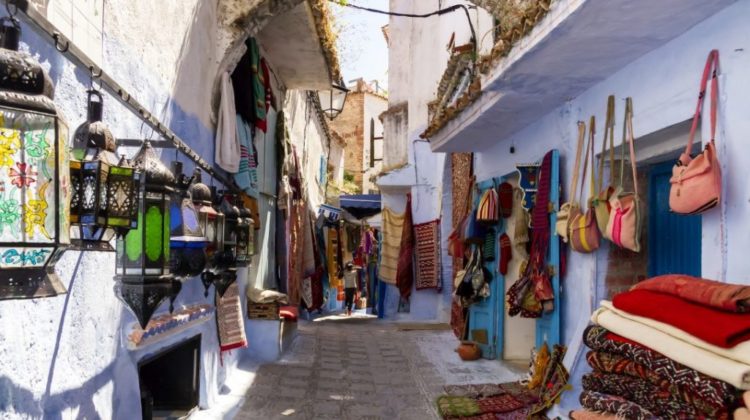
You can’t say you’ve been to morocco until you’ve wandered through the Medinas. These labyrinthine places are the oldest part of every city in Morocco.
You name it : Tarbouchs, Moroccan slippers, rugs , leather made bags… If you love shopping, you’ll be amazed by the beauty of the natural and handmade products.
In Morocco, almost every city has its own Medina, and to help you discover the beauty of each one, we present you a list with some of the most beautiful Medinas to visit while in Morocco.
Table of Contents
What is a Medina ?
The term “Medina” is derived from the Arabic word for “city” and signifies the part of a city that has preserved its original character, in contrast to more modern districts.
The historical purpose of the Medina’s ramparts was to protect the city from invaders. Many Medinas are car-free due to the narrow alleyways that cannot accommodate vehicles, creating a serene pedestrian environment.
Visiting a Medina is like embarking on an enchanting journey through a maze of narrow alleyways and winding streets.
The old Medina of Marrakech:
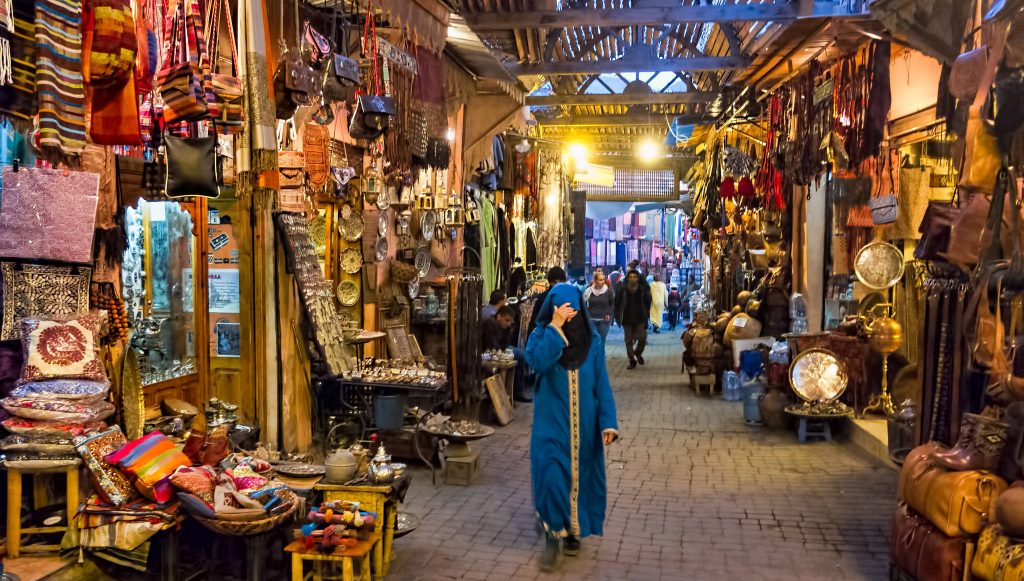
Marrakech, the captivating city known for its warm climate, splendid mosques, and exquisite crafts, lures thousands of visitors annually.
This bustling tourist hub offers a luxurious experience and has earned a spot on UNESCO’s World Heritage list, highlighting its natural and cultural significance.
The heart of the red city, the Medina of Marrakech, is a vibrant and spiritually rich area.
As you delve deeper into this maze of alleyways, you’ll encounter ancient Riads and bustling souks.
Along the way, you can explore quaint handicraft shops stocked with traditional clothing, jewelry, hand-knotted rugs, and carpets.
The Medina of Fez:
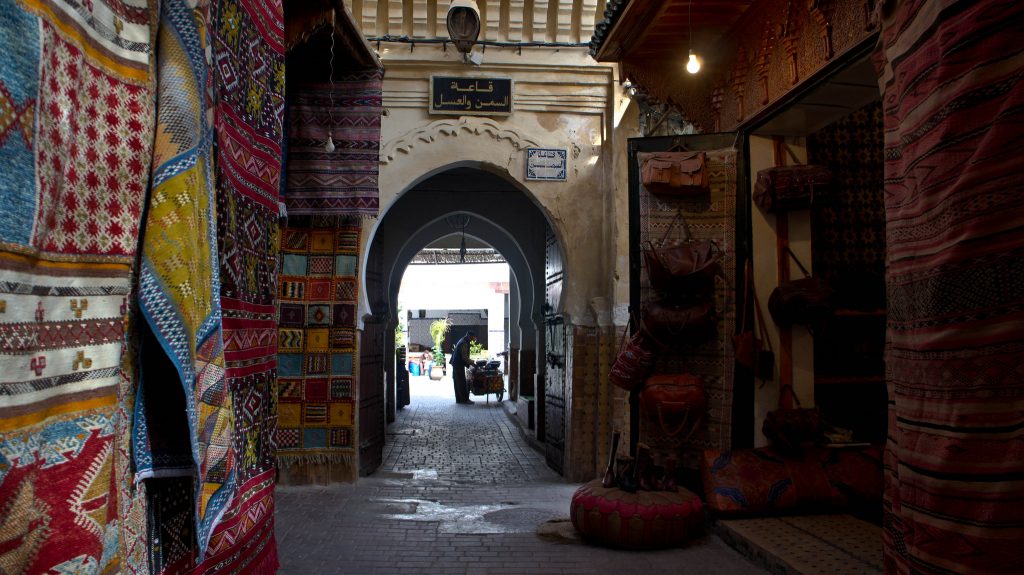
One of Morocco’s oldest Medinas, Fez el Bali (The Old Fez), is recognized as a world monument by UNESCO.
Home to Al-Karaouine, the world’s oldest university, the Medina of Fez conceals numerous mosques, souks, museums, and monuments.
A haven for handicraft enthusiasts, Fez’s Medina is renowned for its magnificent leather tanneries, exquisite pottery and ceramics workshops, and intricate woodwork. You’ll be enchanted by this culturally rich Medina.
The Medina of Chefchaouen:
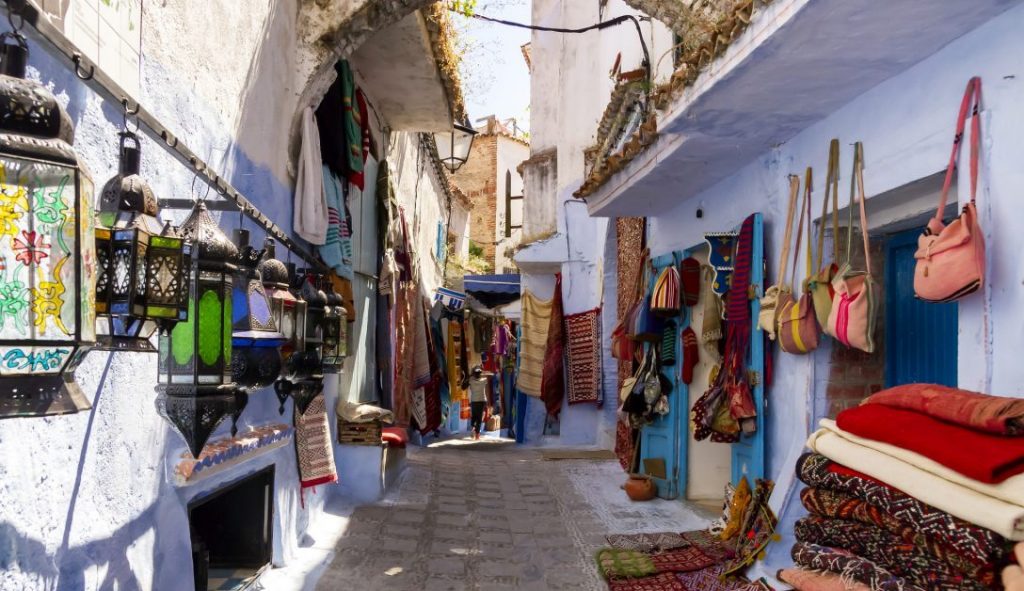
Wandering in the winding streets of Chefchaouen’s medina will get you thinking that you are in a Greek island.
The city of Chefchaouen is also called “The blue pearl” for its blue and white colored streets and houses, and that’s why it is considered as one of the most beautiful Medinas in Morocco.
Don’t forget to fill your wallet, you’ll love the hand woven blankets, perfumes and other items and you sure won’t leave Chefchaouen, unless you buy a souvenir.
Get lost in the beautiful fifty shades of blue alleys and the breathtaking architecture of this amazing place.
The Medina of Essaouira:
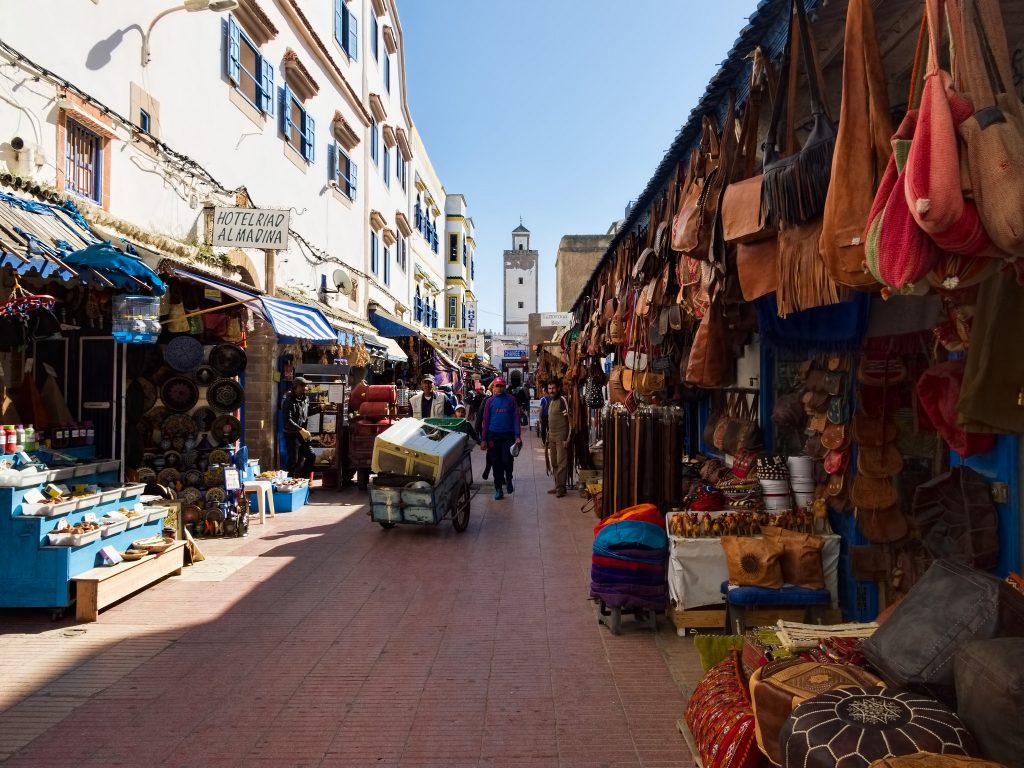
Previously called “Mogador” (Name given by the Pheonicians) Essaouira is a charming city, located along the Atlantic Ocean.
Also called “The windy city” for its wind, blowing throughout the year, Essaouira was considered as a commercial center, until the end of the 19th century.
Thanks to its weather and free spirit ambiance, the city holds multiple water sports competitions and music festivals.
The Medina with its four gates and old walls represents the European military architecture.
Besides the astonishing architecture, the medina is known for its numerous craftsmen, argan oil and spice shops.
You’ll love strolling along the narrow streets and admiring the beauty of the local wooden art in the numerous art galleries and museums.
The Medina of Meknes:
The imperial city of Meknes will charm you with its picturesque heritage. Blending the Islamic and European architecture, the old medina will leave you speechless with its tortuous alleys and vintage ramparts.
If you like antique ceramic pots and traditionally embroidered fabric, than you won’t leave the place empty-handed
The Medina of Taza:
Listed as a national cultural heritage, the medina of Taza is located between the Middle Atlas and the Rifs mountains in North-eastern Morocco.
It has a rich artistic and cultural heritage left by the Idrissides dynasty that ruled the area for more than a millennium.
Among these relics of the past, one can admire the great mosque in Taza, built in the twelfth century.
The magic of the medina of Taza lies in its lively souks, narrow streets and little beautiful craftsmen shops.
The Medina of Tangier:
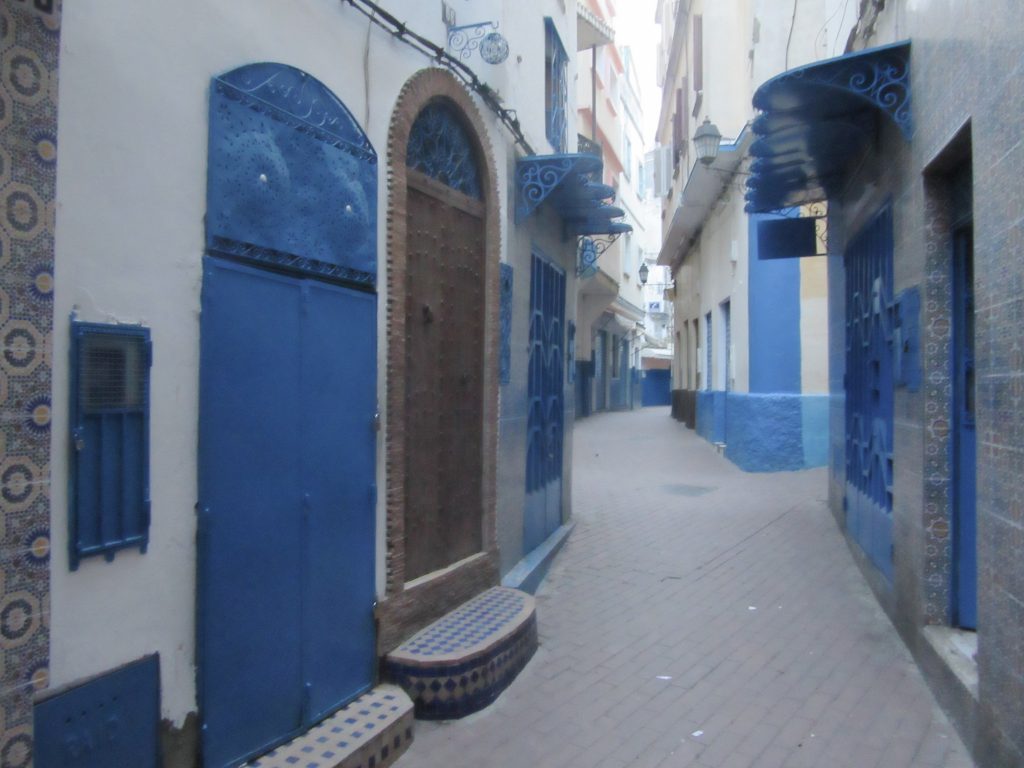
Within the walls of the Portuguese fortress, built in the fifteenth century, you enter the marvelous old town or medina of Tangier.
The main square, that used to be the heart of Tangier, is called Zoco Chico, it is vivid and animated and is perfect for handcraft shopping. Walking around you’ll find souks (Traditional market places) full of herbalists, tanners, and food and spice sellers.
The Medina of Tetouan
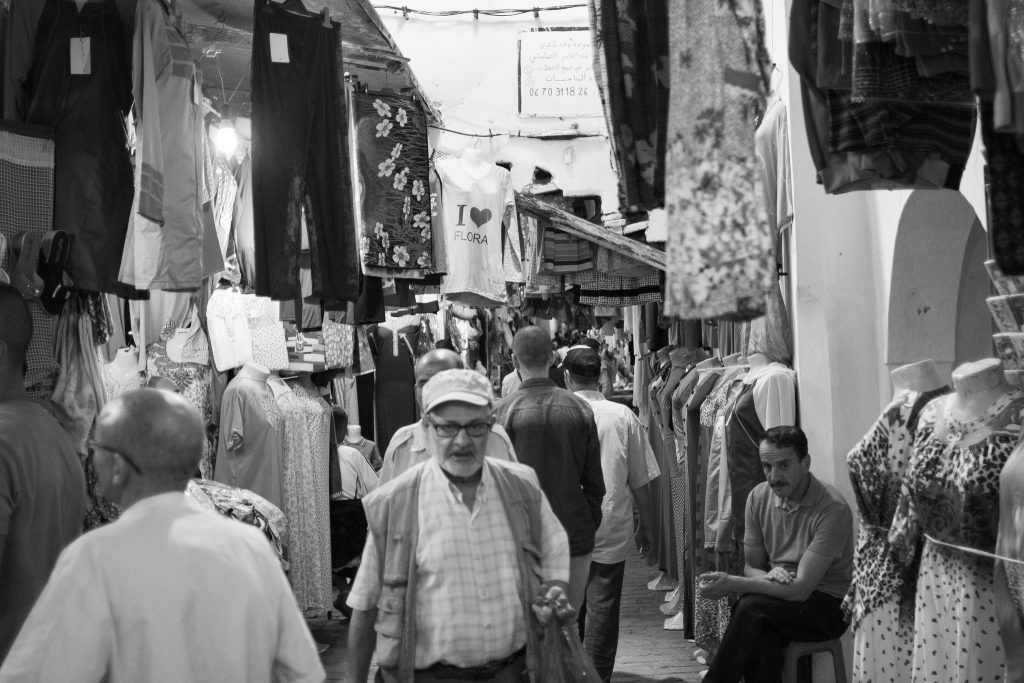
The Spanish-influenced old town of Tetouan, is considered as the smallest medina in Morocco. Listed as one of the UNESCO’s World Heritage, it gathers between the same walls a combination of the Andalusian, Jewish and Berber culture.
Immerse yourself in the traditional Morocco by wandering through the mazelike sunny streets. Discover the beauty of this quiet town.
Don’t forget to try the “Jben” a Moroccan homemade cheese, sold in the medina.
The Medina of Rabat:
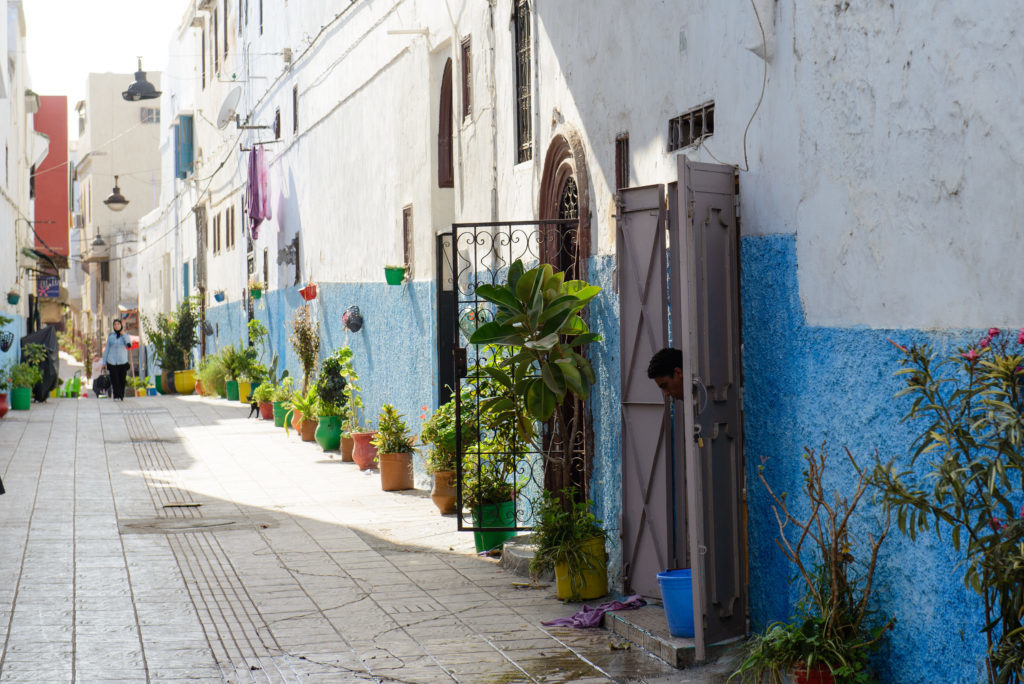
Rabat is the capital of Morocco. Its ancient walled city was founded in the seventeenth century by the andalusian refugees expelled from Spain Durant the reign of King Philip III.
You’ll enjoy strolling along the wide streets of the medina, known for its covered market, florists and shops offer a variety of product (clothes, rugs, spices…)
The Souiqa quarter is the most crowded street in the medina of Rabat, but at the end of that quarter you’ll find Souk Sebat, a very popular leather market where you’ll find lot of shops selling slippers, bags and leather jackets.
“Rue des Consules” another popular part of the Medina, famous for its splendid glass roof, filtering the morning sun rays is a market full of carpet shops.
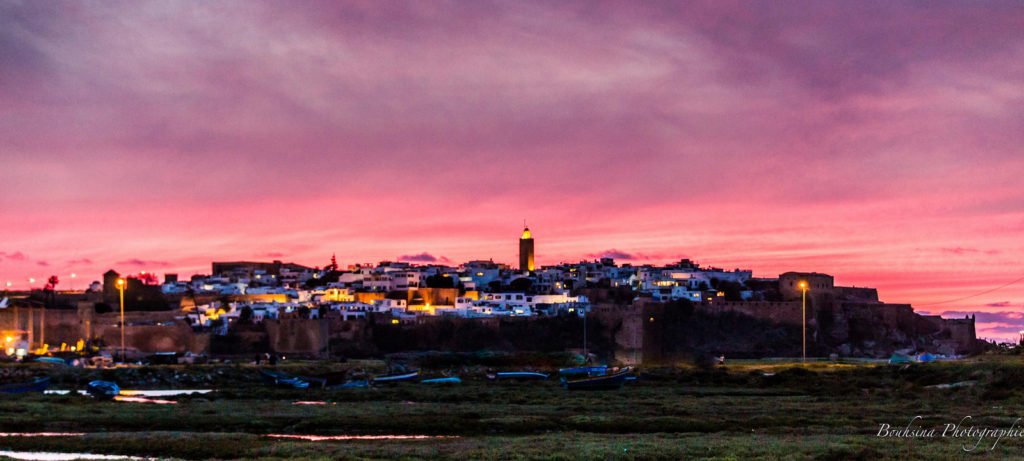
Foundouks, riads and mosques will attract you with their beautiful and large doors, reminding you of a bygone era.
The Medina of Casablanca:
Unlike the other medinas, Casablanca’s old city is a big street market. The clock tower entrance allows you to reach the colorful souqs, where you can shop and try traditional dishes.
Aside from the market, you’ll find the Sqala, a small fortress monument turned into a traditional restaurant.
In Conclusion:
Morocco’s Medinas are not just historic quarters; they are living testaments to the country’s rich cultural heritage and enduring charm. Each Medina tells a unique story, with its own blend of colors, aromas, and traditions.
As you wander through these enchanting mazes of narrow streets and bustling souks, you’ll be transported to a world where time seems to stand still.
So, when you plan your journey to Morocco, make sure you don’t just visit the country; immerse yourself in its soul by exploring its Medinas. These timeless treasures are not just destinations; they are experiences that will stay with you long after you’ve left Morocco’s shores